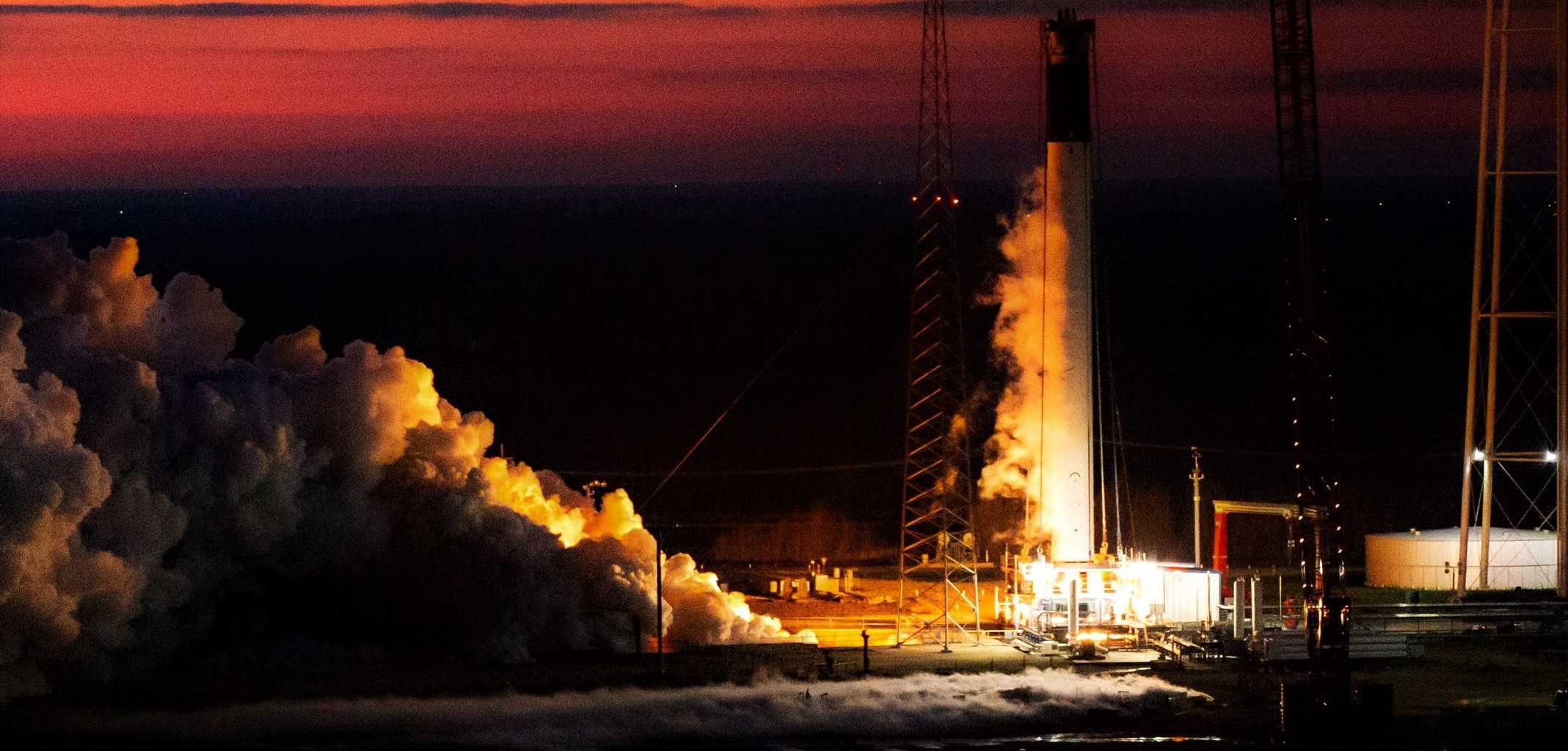
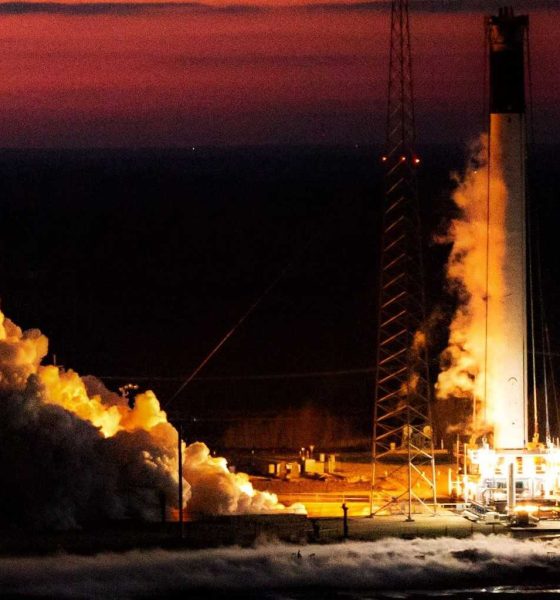
News
SpaceX military launch cleared for historic rocket landing attempt
SpaceX officially has permission to perform a Falcon 9 booster recovery after its next launch for the US Air Force, now guaranteed to be the first time a rocket booster attempts to land during an operational launch for the US military.
Alongside their booster landing attempt confirmation, the USAF Space and Missile Systems Center (SMC) also posted the first official SpaceX video of a rocket acceptance test released in almost 2.5 years, a test it says was completed just days after the GPS satellite it’s scheduled to launch arrived in Florida. The very same Falcon 9 booster was shown off in unprecedented detail just last month and now SMC says that SpaceX fired up the rocket at its McGregor, Texas development facilities for a routine static fire on February 13th. The company is currently scheduled to launch its second USAF GPS III satellite – Space Vehicle 03 (SV03) – no earlier than 7am EDT (11:00 UTC), April 29th, a target set just days ago.
With the spacecraft in Florida and factory-fresh Falcon 9 booster successfully proofed, all that remains is for SpaceX to test and deliver the mission’s Falcon upper stage and payload fairing (if it hasn’t already). After the booster – believed to be B1060 – is inspected and its tanks are cleaned, it can also be packaged and transported by road the rest of the way to SpaceX’s Florida launch facilities, setting the company up for the critical mission and historic landing attempt.
While SpaceX has technically already landed Falcon 9 and Falcon Heavy boosters after its NROL-76 and STP-2 launches for the NRO and USAF, the company only officially began operational military launches once its Falcon 9 rocket was fully certified. STP-2, for example, was effectively high-stakes make-work designed to help the USAF fully certify SpaceX’s brand new Falcon Heavy rocket to launch expensive – verging on irreplaceable – military satellites.
Its first truly operational US military launch occurred in December 2018, when Falcon 9 booster B1054 was intentionally expended in support the USAF’s inaugural GPS III launch, successfully placing the first of 10 (or 32) planned upgraded navigation satellites into orbit. It’s believed that the USAF required such extreme safety margins (extra propellant and performance) that SpaceX couldn’t even attempt booster or fairing recovery. This made B1054 the first (and hopefully only) Falcon 9 Block 5 booster to launch without even the basic hardpoints needed to attach landing legs.
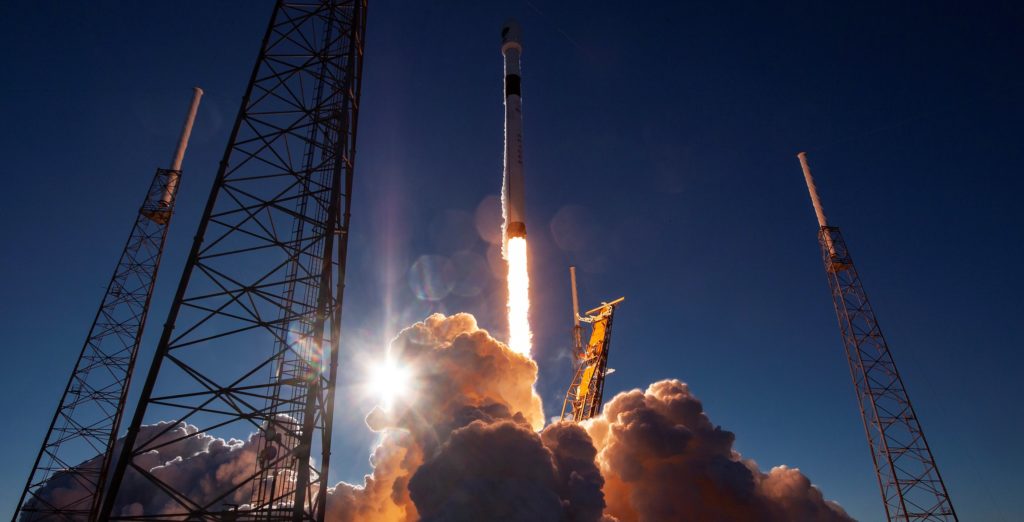
Effectively confirming that B1054’s demise was was a contrivance and by no means a technical necessity, the SMC announced on February 20th that SpaceX’s GPS III SV03 mission is officially “the first time a booster is planned to land on a drone ship during a NSS [National Security Space] launch.” Effectively identical to B1054 aside from the addition of grid fins and landing legs, this means that Falcon 9 booster B1060 will be able to attempt a landing aboard a SpaceX drone ship shortly after launch.
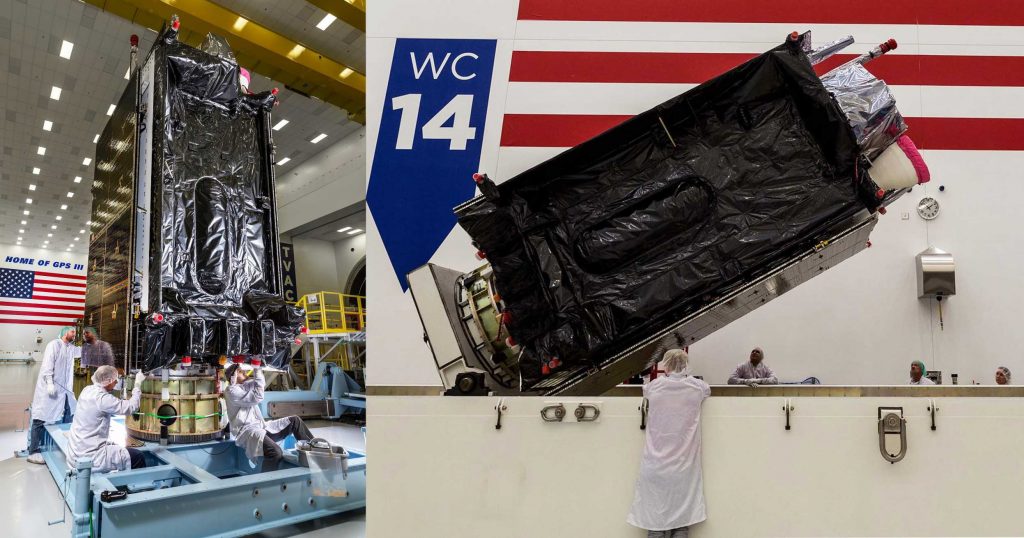
Just like GPS III SV01 satellite launched by SpaceX in December 2018 and the GPS III SV02 satellite launched United Launch Alliance (ULA) launched in August 2019, GPS III SV03 is a more than $500 million spacecraft designed to upgrade the US GPS navigation constellation. SpaceX has already won five (of five) competitively-awarded GPS III launch contracts thanks to its Falcon 9 rocket’s exceptionally competitive pricing, meaning that there is an excellent chance the company will win many more in the near future.
GPS III SV03 is one of 10 “Block IIIA” satellites to be launched between 2018 and 2026 and will be followed by another 22 “Block IIIF” satellites to be built by Lockheed Martin for ~$330M apiece. All 26 unassigned spacecraft will need launches of their own between now and the mid-2030s, worth anywhere from $1-2.5B to SpaceX if the company performs well on all five of its first contracts and continues to crush competitor ULA on launch costs.
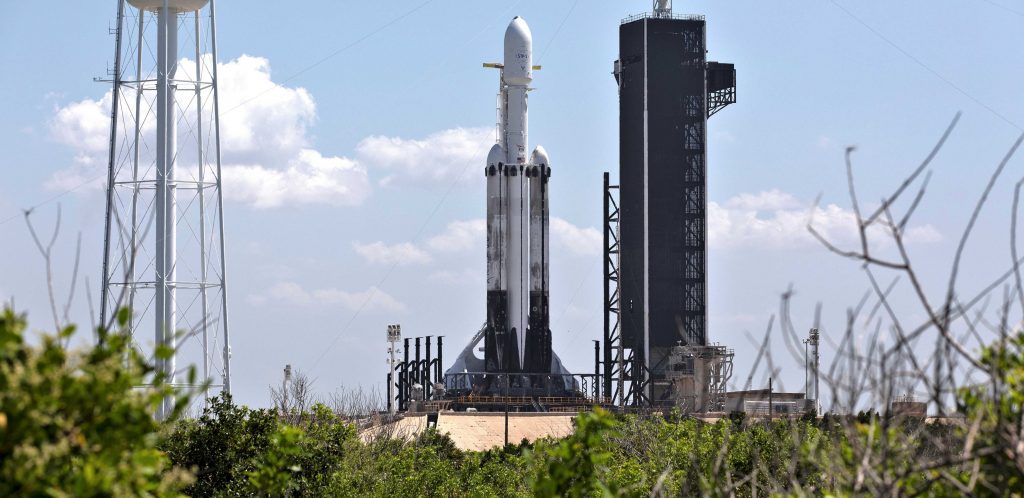
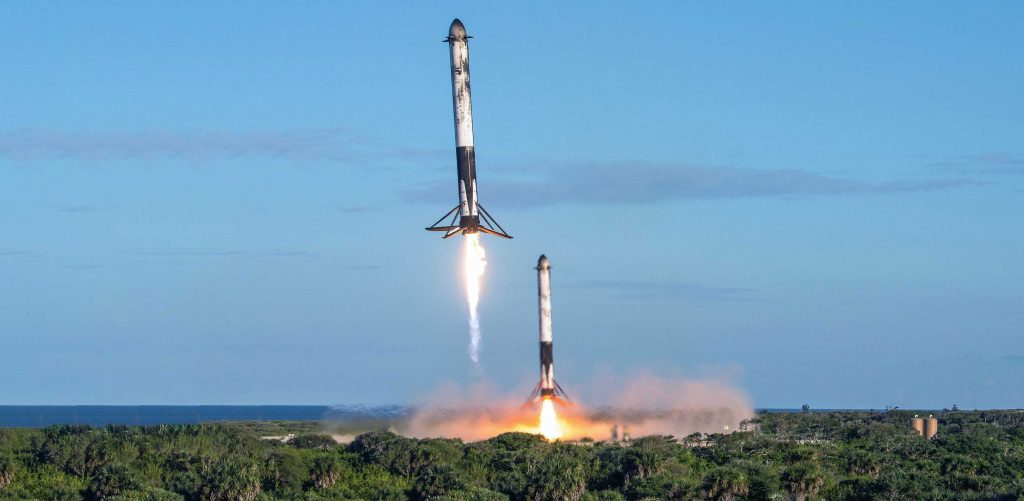
With the USAF already demonstrably interested in supporting Falcon booster reusability and now open to SpaceX recovering Falcon 9 boosters after moderately-challenging GPS III launches, it’s safe to say that SpaceX’s ultra-competitive pricing is here to stay.
Check out Teslarati’s Marketplace! We offer Tesla accessories, including for the Tesla Cybertruck and Tesla Model 3.

Elon Musk
SpaceX maintains unbelievable Starship target despite Booster 18 incident
It appears that it will take more than an anomaly to stop SpaceX’s march towards Starship V3’s refinement.

SpaceX recently shared an incredibly ambitious and bold update about Starship V3’s 12th test flight.
Despite the anomaly that damaged Booster 18, SpaceX maintained that it was still following its plans for the upgraded spacecraft and booster for the coming months. Needless to say, it appears that it will take more than an anomaly to stop SpaceX’s march towards Starship V3’s refinement.
Starship V3 is still on a rapid development path
SpaceX’s update was posted through the private space company’s official account on social media platform X. As per the company, “the Starbase team plans to have the next Super Heavy booster stacked in December, which puts it on pace with the test schedule planned for the first Starship V3 vehicle and associated ground systems.”
SpaceX then announced that Starship V3’s maiden flight is still expected to happen early next year. “Starship’s twelfth flight test remains targeted for the first quarter of 2026,” the company wrote in its post on X.
Elon Musk mentioned a similar timeline on X earlier this year. In the lead up to Starshp Flight 11, which proved flawless, Musk stated that “Starship V3 is a massive upgrade from the current V2 and should be through production and testing by end of year, with heavy flight activity next year.” Musk has also mentioned that Starship V3 should be good enough to use for initial Mars missions.
Booster 18 failure not slowing Starship V3’s schedule
SpaceX’s bold update came after Booster 18 experienced a major anomaly during gas system pressure testing at SpaceX’s Massey facility in Starbase, Texas. SpaceX confirmed in a post on X that no propellant was loaded, no engines were installed, and personnel were positioned at a safe distance when the booster’s lower section crumpled, resulting in no injuries.
Still, livestream footage showed significant damage around the liquid oxygen tank area of Booster 18, leading observers to speculate that the booster was a total loss. Booster 18 was among the earliest vehicles in the Starship V3 series, making the failure notable. Despite the setback, Starship V3’s development plans appear unchanged, with SpaceX pushing ahead of its Q1 2026 test flight target.
News
Tesla Sweden faces fresh union blockade at key Gothenburg paint shop
Allround Lack works with painting and damage repair of passenger cars, including Teslas.

Tesla’s ongoing labor conflict in Sweden escalated again as the trade union IF Metall issued a new blockade halting all Tesla paintwork at Allround Lack in Gothenburg.
Allround Lack works with painting and damage repair of passenger cars, including Teslas. It currently employs about 20 employees.
Yet another blockade against Tesla Sweden
IF Metall’s latest notice ordered a full work stoppage for all Tesla-related activity at Allround Lack. With the blockade in place, paint jobs on Tesla-owned vehicles, factory-warranty repairs, and transport-damage fixes, will be effectively frozen, as noted in a report from Dagens Arbete. While Allround Lack is a small paint shop, its work with Tesla means that the blockade would add challenges to the company’s operations in Sweden, at least to some degree.
Paint shop blockades have been a recurring tool in the longstanding conflict. The first appeared in late 2023, when repair shops were barred from servicing Tesla vehicles. Days later, the Painters’ Union implemented a nationwide halt on Tesla paint work across more than 100 shops. Since then, a steady stream of workshops has been pulled into the conflict.
Earlier blockades faced backlash from consumers
The sweeping effects of the early blockades drew criticism from industry groups and consumers. Employers and industry organization Transportföretagen stated that the strikes harmed numerous workshops across Sweden, with about 10 of its members losing about 50% of their revenue.
Private owners also expressed their objections. Tibor Blomhäll, chairman of Tesla Club Sweden, told DA in a previous statement that the blockades from IF Metall gave the impression that the union was specifically attacking consumers. “If I get parking damage to my car, I pay for the paint myself. The company Tesla is not involved in that deal at all. So many people felt singled out, almost stigmatized. What have I done as a private individual to get a union against me?” Blomhäll stated.
In response to these complaints, IF Metall introduced exemptions, allowing severely damaged vehicles to be repaired. The union later reopened access for private owners at workshops with collective agreements. The blockades at the workshops were also reformulated to only apply to work that is “ordered by Tesla on Tesla’s own cars, as well as work covered by factory warranties and transport damage on Tesla cars.”
News
Tesla breaks Norway’s all-time annual sales record with one month to spare
With November alone delivering 4,260 new registrations, Tesla has cemented its most dominant year ever in one of Europe’s most mature EV markets.

Tesla shattered Norway’s decade-old annual sales record this month, overtaking Volkswagen’s long-standing milestone with over one month still left in the year. Backed by surging demand ahead of Norway’s upcoming VAT changes, Tesla has already registered 26,666 vehicles year-to-date, surpassing Volkswagen’s 2016 record of 26,572 units.
With November alone delivering 4,260 new registrations month-to-date, Tesla has cemented its most dominant year ever in one of Europe’s most mature EV markets.
Model Y drives historic surge in Norway
Tesla’s impressive momentum has been led overwhelmingly by the Model Y, which accounted for 21,517 of Norway’s registrations this year, as noted in a CarUp report, citing data from Elbil Statistik. The Model 3 followed with 5,087 units, while the Model S and Model X contributed 30 and 19 vehicles, respectively. Even the parallel-imported Cybertruck made the charts with 13 registrations.
Demand intensified sharply through autumn as Norwegian buyers rushed to secure deliveries before the country’s VAT changes take effect in January. The new regulation is expected to add roughly NOK 50,000 to the price of a Model Y, prompting a wave of early purchases that helped lift Tesla beyond the previous all-time record well before year-end.
With December still ahead, Tesla is positioned to extend its historic lead further. Needless to say, it appears that Norway will prove to be one of Tesla’s strongest markets in Europe.
FSD could be a notable demand driver in 2026
What’s especially interesting about Tesla’s feat in Norway is that the company’s biggest selling point today, Full Self-Driving (Supervised), is not yet available there. Tesla, however, recently noted in a post on X that the Dutch regulator RDW has reportedly committed to issuing a Netherlands national approval for FSD (Supervised) in February 2026.
The RDW posted a response to Tesla’s post, clarifying the February 2026 target but stating that FSD’s approval is not assured yet. “The RDW has drawn up a schedule with Tesla in which Tesla is expected to be able to demonstrate that FSD Supervised meets the requirements in February 2026. RDW and Tesla know what efforts need to be made to make a decision on this in February. Whether the schedule will be met remains to be seen in the coming period,” the RDW wrote in a post on its official wesbite.
If FSD (Supervised) does get approved next year, Tesla’s vehicles could gain a notable advantage over competitors, as they would be the only vehicles on the market capable of driving themselves on both inner-city streets and highways with practically no driver input.








